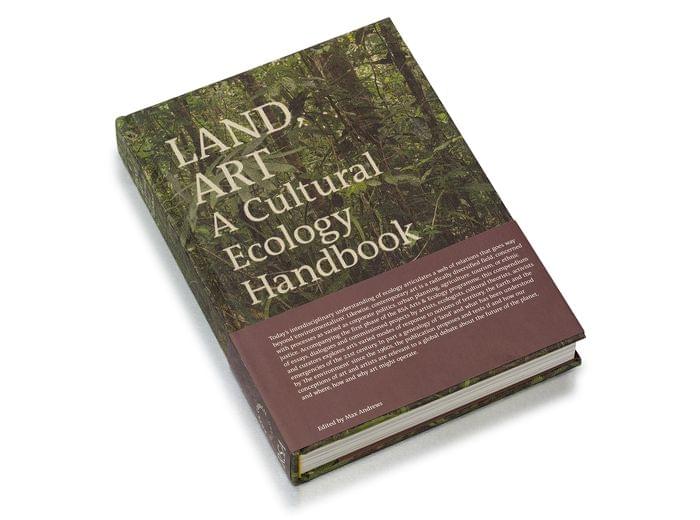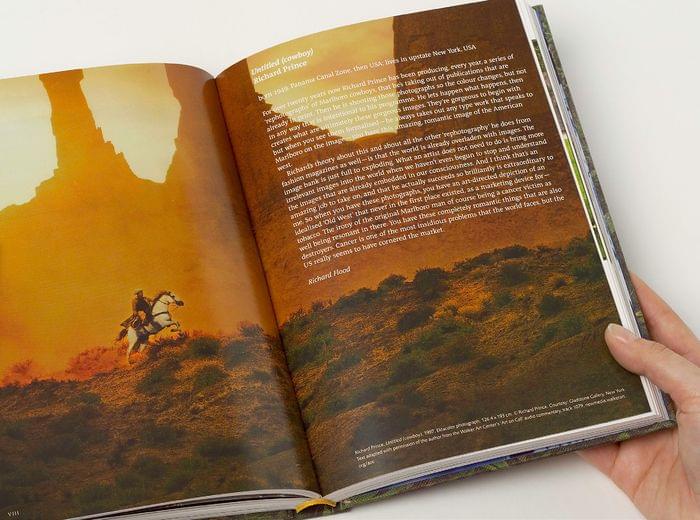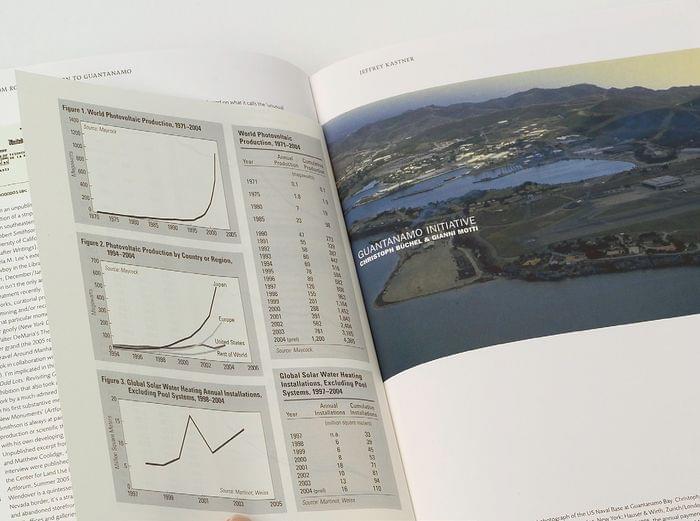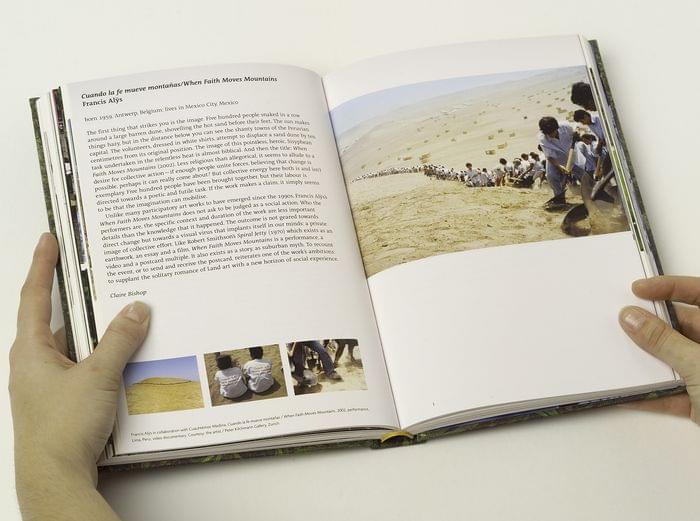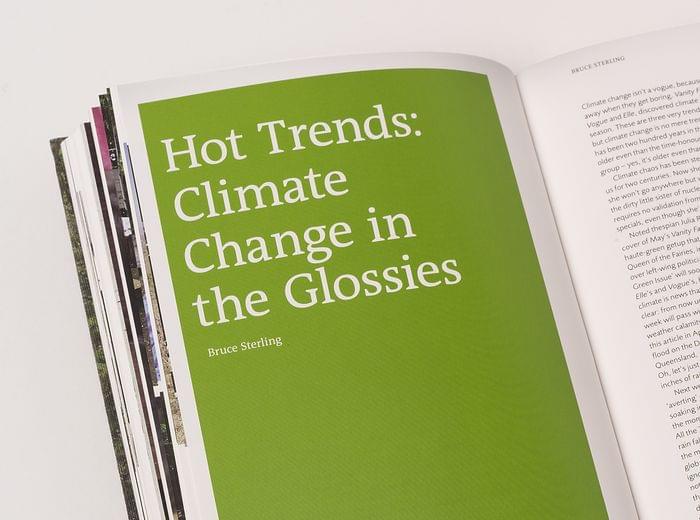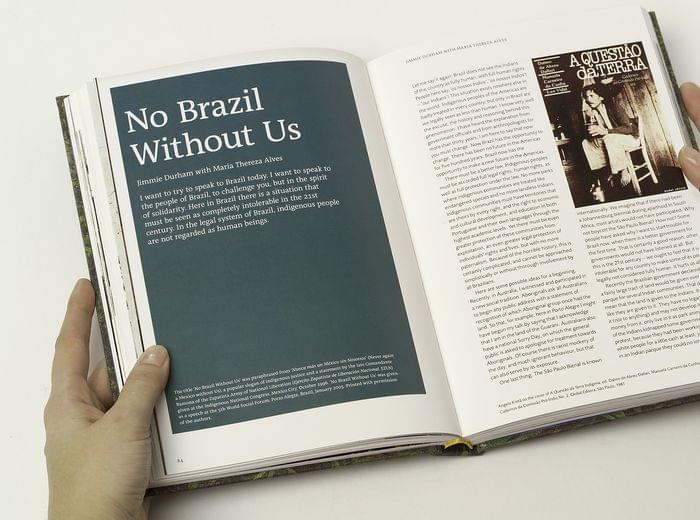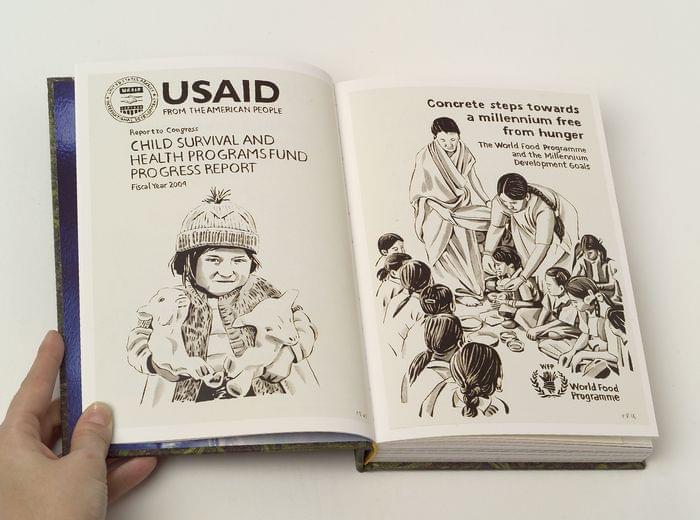Contributors: Lara Almarcegui, Amy Balkin, James Boyle, Fernando Bryce, Susan Canney, Chu Yun, Jimmie Durham & Maria Thereza Alves, Feng Yuan, Futurefarmers & Free Soil, Tue Greenfort, Thomas Hirschhorn, Katie Holten, Jiang Jun, Jeffrey Kastner, Winona LaDuke, Learning Group, Lucy R. Lippard, Wangari Maathai, Jonathan Meuser, Jason Middlebrook, Nils Norman, David Naguib Pellow & Lisa Sun-Hee Park, PLATFORM, Natascha Sadr Haghighian, Paul Schmelzer, Peter Schmelzer, Michael Shellenberger & Ted Nordhaus, Cameron Sinclair, Stephanie Smith, Bruce Sterling, Kirstine Roepstorff, Rirkrit Tiravanija, David Toop, Vitamin Creative Space, Insa Winkler, the Worldwatch Institute and Zheng Guogu.
Artists’ plates section: Claire Bishop on Francis Alÿs, Gemma Lloyd on Donna Conlon, Max Andrews on Henrik Håkansson and Insa Winkler, Diana Baldon on Marine Hugonnier, Mariana Cánepa Luna on Alfredo Jaar, Zoë Gray on Brian Jungen, Lars Bang Larsen on Aleksandra Mir, Richard Flood on Richard Prince, Alejandra Aguado on Tomás Saraceno, Francesco Manacorda on Simon Starling.
Accompanying the inaugural year of the
RSA’s Arts & Ecology programme, the anthology “LAND, ART: A Cultural Ecology Handbook” brought together commissioned essays and artworks alongside new and reprinted texts and interviews by ecologists, cultural theorists, environmental activists, and curators. These contributions collectively explored art’s diverse responses to territory, the Earth, and the urgent environmental challenges of the 21st century.
Partly tracing a genealogy of ‘land’ and the evolving understanding of ‘the environment’ since the 1960s—including the practices of Land artists and the rise of eco-consciousness—the publication critically examined how conceptions of art and artists intersected with global debates about the planet’s future. It considered where, how, and why art might have operated—whether through grassroots initiatives, tangential approaches, propaganda, activism, or acts of resistance.
Commissioned by the
Royal Society of Art (RSA) in partnership with
Arts Council England, the publication was
launched in London in December 2006, coinciding with the symposium
No Way Back? organised by
the RSA and Arts Council England in partnership with the
London School of Economics & Political Science.
